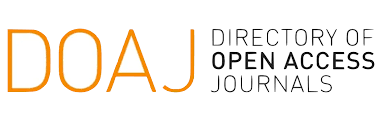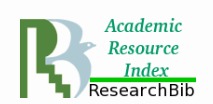About the Journal
Radiophysics and Radiological Protection (Radiophys. Radiol. Prot. J.)is an international, peer-reviewed scientific journal dedicated to advancing the understanding and application of radiation physics (X rays and `radioisotopes production and applications in the field of radiology and medical imaging and industrial applications . The journal encompasses a broad spectrum of topics, including:
- Radiophysics: Fundamental physics underlying radiological imaging modalities, image formation, quality assurance, and dosimetry.
- Medical Imaging Physics: Development and optimization of imaging techniques, image reconstruction, and analysis.
- Radioactivity: environmental radioactivity
- Production of Radioisotopes and its applications
- Radiation Detection and Dosimetry: Assessment and management of radiation dose in diagnostic and therapeutic radiology.
- Radiation Safety and Protection: Principles and practices for safeguarding patients, healthcare workers, and the public from ionizing radiation.
- Radiobiology: Effects of ionizing radiation on biological systems, including mechanisms of damage and repair.
- Radiotherapy Physics: Physical aspects of radiation therapy, including treatment planning, dose calculation, and quality assurance.
- Nuclear Medicine Physics: Physics principles applied to nuclear medicine imaging and therapy.
The journal will publish original research articles, review articles, case reports, and technical notes that contribute to the advancement of radiophysics and radiological protection.
Publication Ethics
Oloum Al Mostaqbal Group journals uphold the highest ethical scientific research and publication standards. We expect authors submitting manuscripts to adhere to the following principles:
Research Conduct:
- All research reported in Oloum Al Mostaqbal Group journals must comply with relevant ethical guidelines and regulations. This includes obtaining informed consent from human participants and adhering to animal welfare protocols.
- Authors must disclose potential conflicts of interest that could influence the research or its interpretation.
- Data collection, analysis, and reporting must be conducted with honesty and integrity. Data fabrication or falsification of results is strictly prohibited.
Authorship:
- Authorship should be attributed to individuals who made significant contributions to the conception, design, execution, or interpretation of the research. All authors must have read and approved the final manuscript.
- Ghost, and guest or honorary authorship are not permitted.
- Authorship should be based on merit and reflect the level of intellectual contribution. The International Committee of Medical Journal Editors (ICMJE) outlines https://www.icmje.org/icmje-recommendations.pdf
Authors Contribution
An author should have made significant intellectual contributions to the reported work. This could involve:
- Participating in the conception or design of the study.
- Contributing to data acquisition, analysis, or interpretation.
- Drafting a portion of the manuscript or critically revising it for intellectual content.
Disqualified Authorship
Individuals who provided technical, data collection, or general writing assistance should be acknowledged but wouldn't qualify as authors.
- People who solely secured funding for the research wouldn't be considered authors based on these criteria.
Publication Ethics:
- Authors must ensure the originality of their work and properly cite all references used. Plagiarism and duplicate publication are unacceptable.
- Authors must disclose any prior publications related to the submitted manuscript.
- Authors are responsible for obtaining any necessary permissions to reproduce copyrighted material.
Data Availability:
- Authors are encouraged to share data underlying their research, following FAIR (Findable, Accessible, Interoperable, Reusable) principles.
- Depending on the nature of the research and potential ethical or privacy concerns, specific data sharing policies may be outlined.
Peer Review Process:
- Oloum Al Mostaqbal Group journals employ a rigorous double-blind peer review process to ensure the quality, objectivity, and significance of published research.
- Reviewers are expected to maintain confidentiality regarding the submitted manuscripts and recuse themselves from reviewing any work with conflict of interest.
Editorial Decisions:
- The Editor-in-Chief and editorial board make final decisions regarding manuscript acceptance based on the peer review process and adherence to ethical guidelines.
- All editorial decisions will be made fairly and without bias.
Ethical Publishing
- Safeguarding ethics: The monitoring and safeguarding of publishing ethics will be maintained by the all editors of the Oloum Al Mostaqbal Group journals.
- Retracting articles: Oloum Al Mostaqbal Group journals are willing to publish corrections, clarifications, retractions, and apologies as appropriate and when needed by the ethical conduct and publishing practices.
- No plagiarism, no fraudulent data: Oloum Al Mostaqbal Group journals are committed to only publishing manuscripts that are free from plagiarism and that contain no fraudulent data. Health Professions Education does not tolerate unethical publication practices.
Oloum Al Mostaqbal Group journals take research misconduct very seriously. Any misconduct allegations will be thoroughly investigated, and appropriate actions may be taken, including retraction of published articles.
We encourage authors to consult relevant ethical codes and guidelines for their research field. Based on the nature of the research submitted to Oloum Al Mostaqbal Group journals, further details on specific requirements for informed consent or animal welfare protocols may be established. The Editor-in-Chief and editorial Board are responsible for adhering to the COPE Code of Conduct for Journal Editors.
By adhering to these ethical principles, Oloum Al Mostaqbal Group journals strive to ensure the integrity and credibility of published research, fostering trust and progress in applied physical sciences and engineering.






